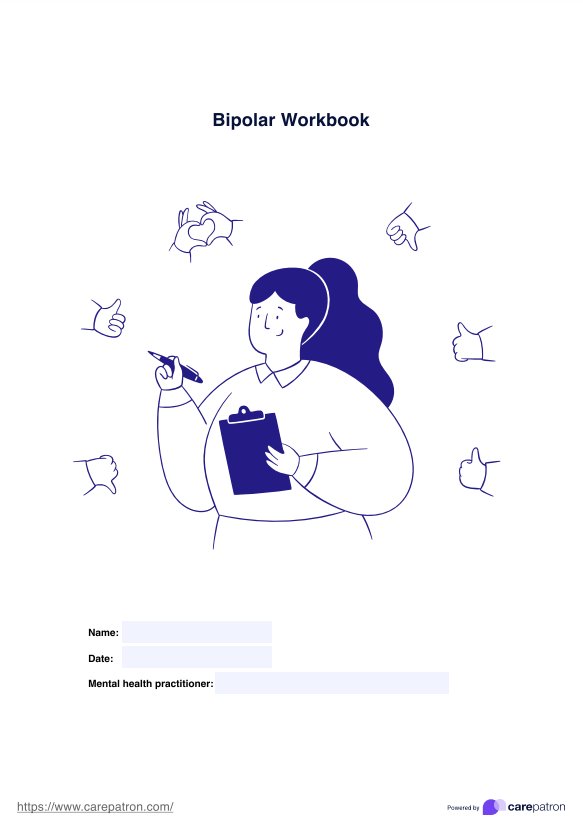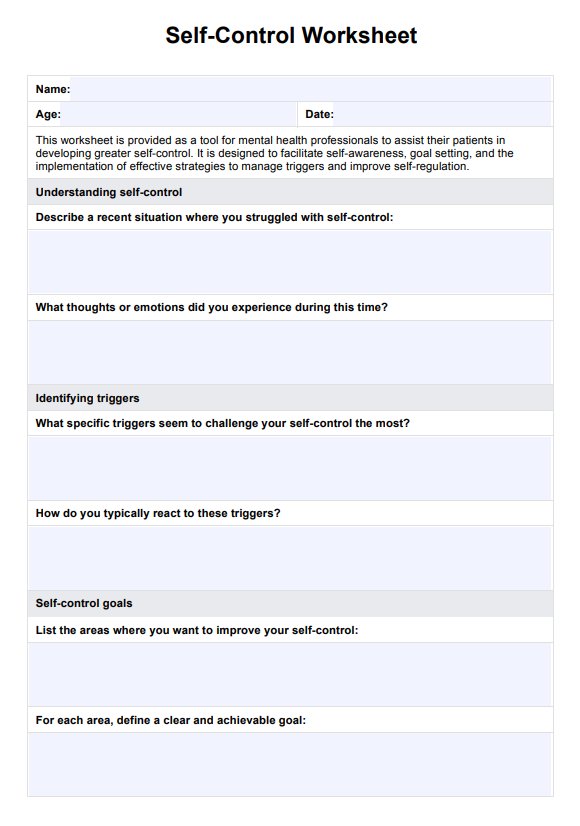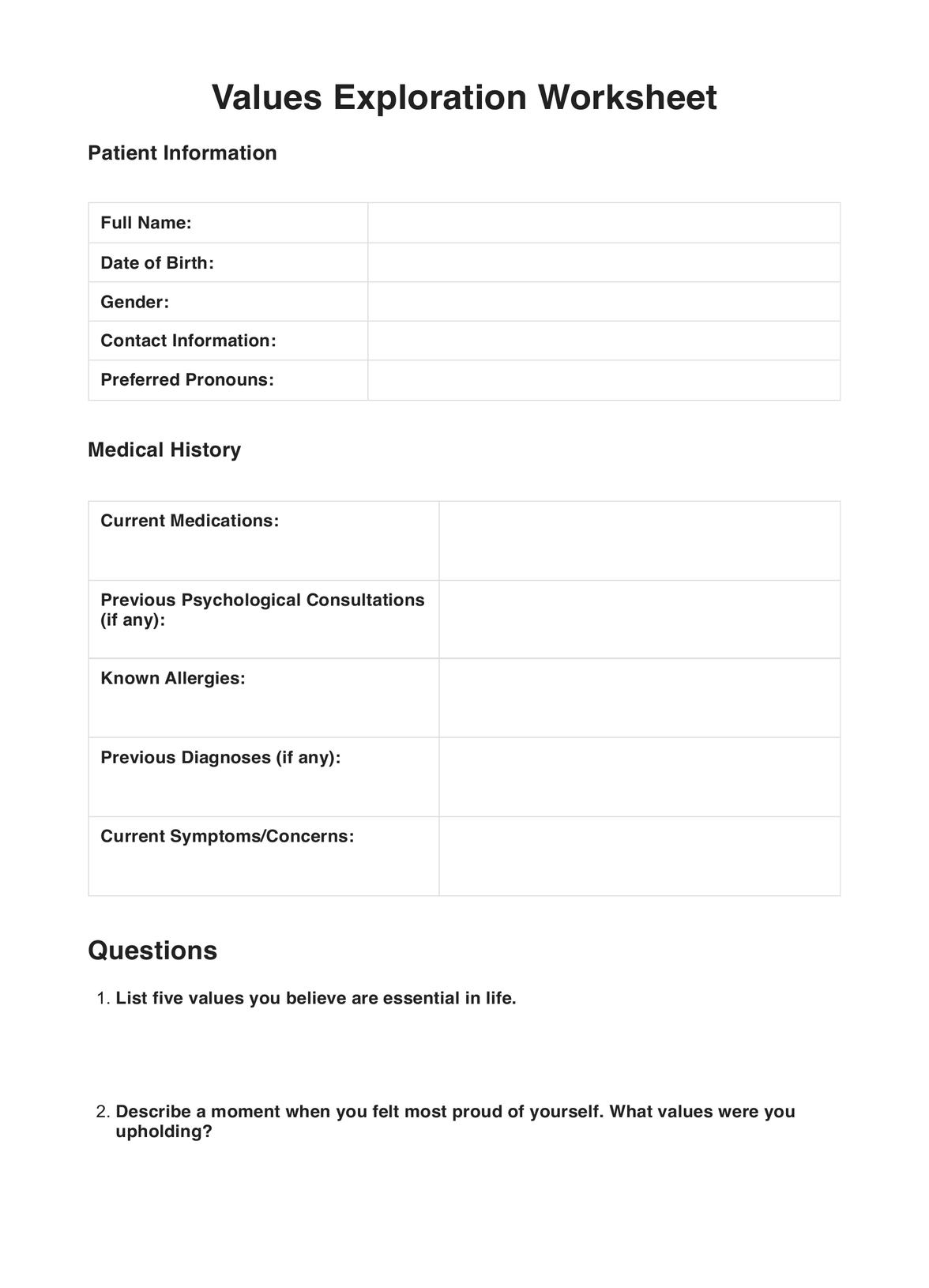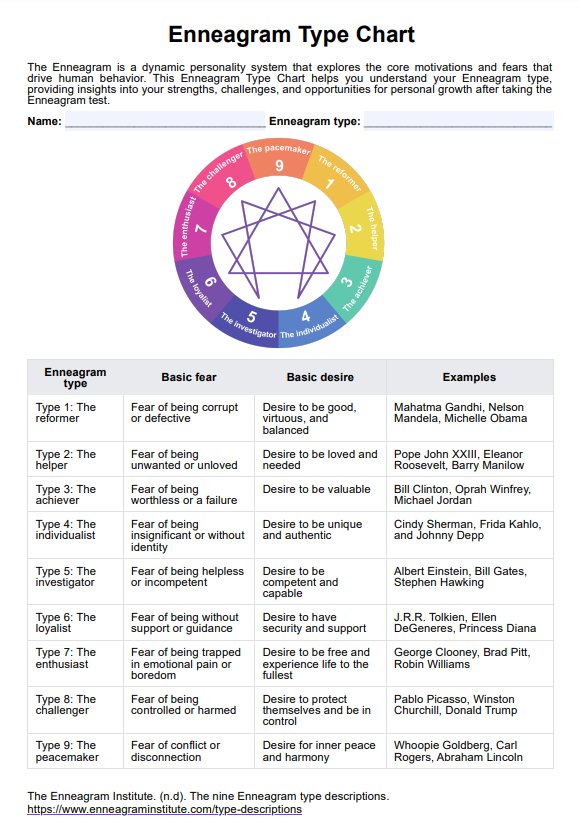Wise Mind Worksheets
Make decisions from a place of inner wisdom without relying solely on emotions or logic, and start by identifying the emotional, rational, and wise states of mind using our Wise Mind Worksheet, informed by principles of Dialectical Behavioral Therapy.


What Is A Wise Mind Worksheet?
The Wise Mind is one of three states of mind in dialectical behavioral therapy1 (DBT), along with the Emotional Mind and the Reasonable Mind. These three mindsets can be thought of as different ways of viewing a situation, each with different priorities and motivations.
The Emotional Mind is when feelings, moods, and emotions govern your decision-making, whereas the Reasonable Mind is when logic, facts, and reason govern your decision-making. Neither of these states of mind is the “correct” one, and in fact, DBT posits that personal wisdom and truth come from uniting the two in the Wise Mind.
Accessing one’s Wise Mind, and realizing when a decision is coming from a place of wisdom rather than solely emotion or reason takes practice, which is where our comes in!
The first step to understanding the difference between the Emotional, Reasonable, and Wise Minds is learning to identify when you are in each mindset, and our worksheet is a great place to help your clients start to do this. To learn how to start using this worksheet in your practice, just keep reading.
Wise Mind Worksheets Template
Wise Mind Worksheets Example
How To Use This Wise Mind Worksheet
This worksheet is super easy to start using, and best of all, it’s free to download using the link on this page! Once you’ve got your own copy of our Wise Mind Worksheet, just follow these simple steps to implement this resource in your own practice.
Step One. Discuss the Wise Mind Concept with your Client
The first step is to ensure your client understands the concept of the three different mindsets in DBT: emotional, reasonable, and wise minds. We have included a short explanation on the worksheet itself, but for the best results, we recommend you discuss the DBT principles with your client prior to providing them with the worksheet.
Step Two. Client to complete the Wise Mind Worksheet
Next, your client should complete the Venn diagram activity with examples of their emotional, reasonable, and wise mindsets.
Step Three. Discuss their examples from the worksheet
This step can be particularly useful in a group therapy session, but can also be beneficial in an individual therapy session. That is to discuss your client’s responses and run through any questions or parts they were unsure about while completing this worksheet.
Step Four. Store the worksheet securely
Finally, if you are holding on to a copy of the Wise Mind worksheet, ensure you store it securely with the rest of your client’s therapeutic record.
Who Can Use these Printable Wise Mind Worksheets (PDF)?
This worksheet is designed as an introduction to clients to the concept of the Wise Mind, so it can be completed by most clients who wish to improve their mindfulness skills and get in touch with their inner wisdom. This could be for any number of reasons such as reducing anxiety, improving mood or self-esteem, having more positive communication with others, or working on personality issues. As such, there is a wide range of mental health practitioners who can benefit from offering their clients this Wise Mind Worksheet, including:
- Therapists and psychotherapists
- Clinical psychologists
- Psychiatrists
- Mental Health Nurses
- Counselors
While this introductory worksheet will undoubtedly benefit your clients in identifying their different mindsets, in order to aid your clients in more complex tasks such as accessing their Wise Mind through mindfulness techniques, these practitioners should be trained in or familiar with the principles of DBT.
Why Is This Form Useful For DBT Practitioners?
Help your clients practice mindfulness
As anyone who has tried out mindfulness techniques before will tell you, practice makes perfect! There are wide-ranging benefits of practicing mindfulness beyond distress tolerance which your client will be able to take advantage of as a result of practicing becoming centered on their Wise Mind.
Introduce your clients to DBT
This worksheet can serve as a great introduction for your client to Dialectical Behavioral Therapy, a type of therapy proven to help clients struggling with mood disorders, anxiety disorders, or other mental health conditions. DBT goes a lot deeper than the Wise Mind concept, and by helping your clients dip their toes into the principles of DBT, you can help them gain exposure to a whole new world of therapeutic interventions.
Aid group discussions
We think this worksheet is particularly well suited to group therapy scenarios where your clients can share their examples of emotional, reasonable, and wise minds with each other to help all the group participants gain a stronger idea of these concepts.

Benefits of Wise Mind Worksheets Template
Intuitive Venn diagram format
To illustrate the concept of the Wise Mind and how it provides an intersection with the Emotional and Reasonable Minds, we have made this worksheet a Venn diagram with interactive text boxes.
Digital, interactive PDF
Including interactive textboxes in this Wise Mind worksheet means that your clients can complete it entirely digitally using their device of choice. This then has flow-on benefits for your practice’s information security, and the level of flexibility you offer your clients.
Includes explanation of different mindsets
We know sometimes hearing something once isn’t enough for it to stick, so we have included a brief explanation of the different mindsets in the worksheet for your client to refer back to, should they need it.
Improve your client’s self-awareness
Sometimes it can feel as though you’re sure about something, only to feel completely different once you’ve calmed down or looked at it from another perspective. This worksheet helps your clients to identify their different states of mind and gain deeper self-awareness of the factors that may be influencing the way they feel.
Engage your clients between sessions
Finally, one of the biggest benefits of this worksheet is that it can be completed between sessions as therapy “homework”. This helps your client to become more engaged with their treatment and can save you time during sessions as well as allowing them the time they need to brainstorm examples.
References
1. Linehan, Marsha M., (2015) DBT Skills Training Manual (2nd Ed) New York: The Guilford Press
Commonly asked questions
When your clients complete this worksheet is up to you. In order to remove time pressure during your session, it can be a good idea to offer the worksheet for them to work on between sessions and bring back for you to discuss together once they have completed it. Alternatively, you may wish to help your client through each activity, in which case it can be completed during their session with you.
While we’ve included a brief explanation at the top of this worksheet, practitioners experienced with DBT concepts will be able to help their clients get the most out of this worksheet. As such, having a grounding in Dialectical Behavioral Therapy and the Wise Mind concept is recommended.
The Wise Mind is a name given in DBT to the inner wisdom we all possess. The Wise Mind is one of three mindsets, including the reasonable and emotional minds. While the emotional mind is guided by feelings and the reasonable mind is guided by logic and reason, the wise mind is informed by both emotion and reason to achieve true, personal wisdom and help your clients make wise decisions for themselves.


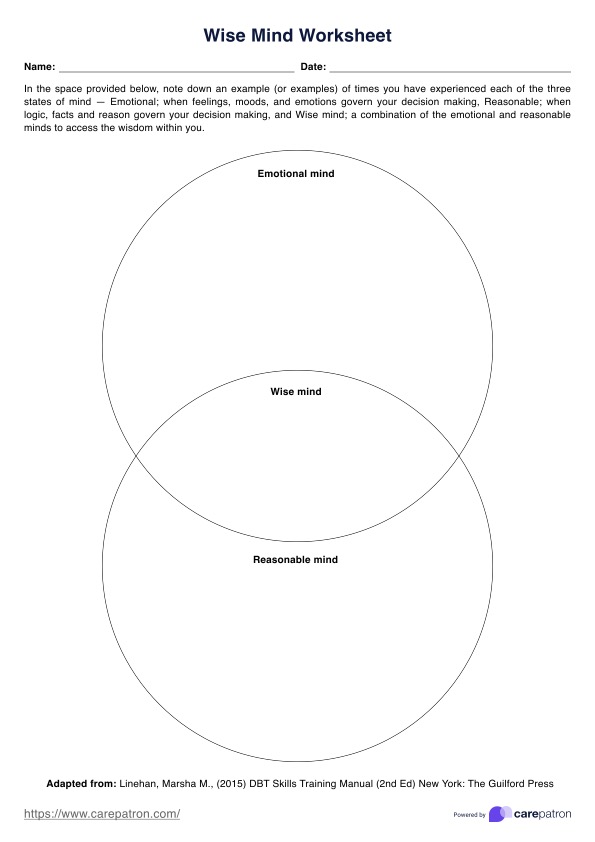
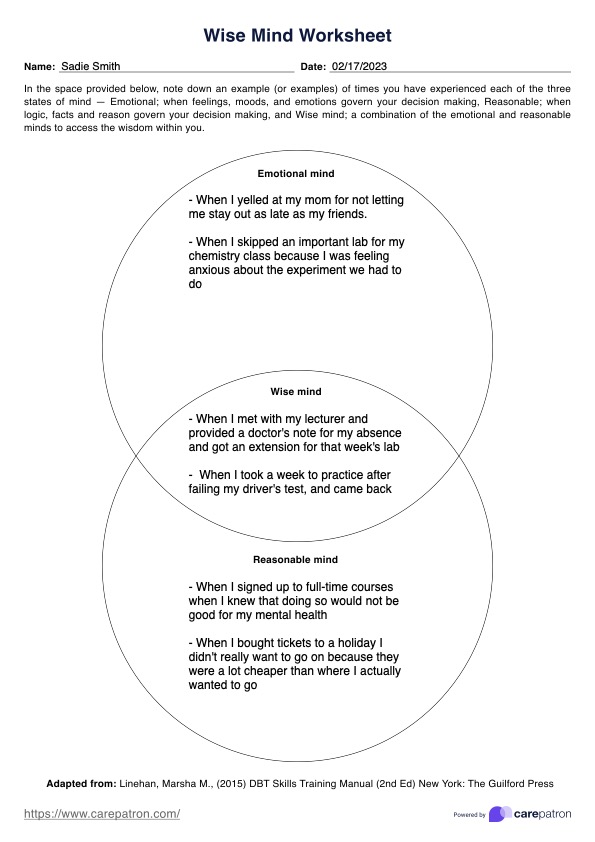















-template.jpg)





















































































